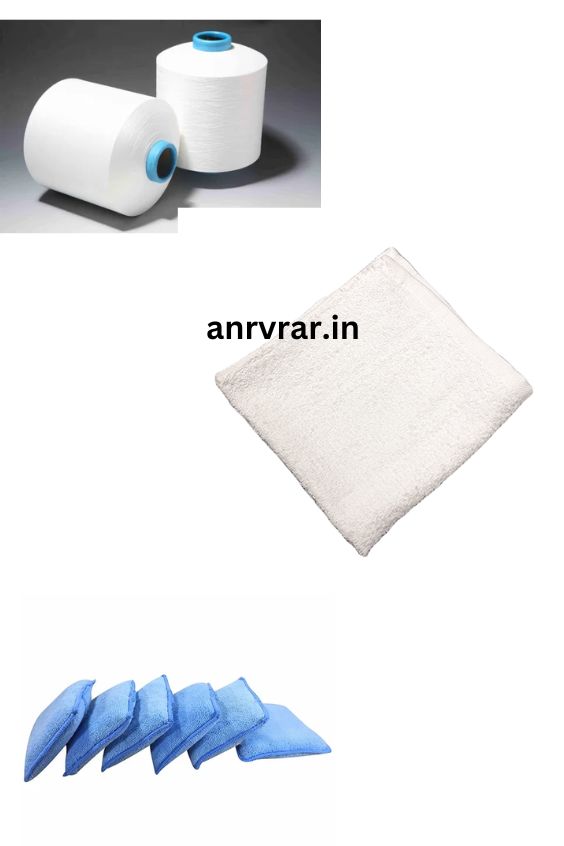Blended Microfiber,Properties
Blended Microfiber
Introduction
Blended microfiber is a modern marvel that has revolutionized various industries with its unique properties and versatility. This article delves into the fascinating world of blended microfiber, exploring its composition, benefits, applications, and more. Whether you’re a fashion enthusiast, a homemaker, or an environmentalist, blended microfiber has something to offer for everyone.
History of Microfiber
Microfiber technology has come a long way since its inception. Initially developed in the 1950s, microfiber evolved through continuous research and innovation. The early days saw its application primarily in cleaning products, but its potential was soon recognized in other sectors. By the 1990s, microfiber had made its way into fashion, home textiles, and beyond.
Composition of Blended Microfiber
Blended microfiber is composed of extremely fine fibers, typically made from synthetic materials like polyester and polyamide. These fibers are thinner than a human hair, giving microfiber its signature softness and strength. The blending process involves combining different types of fibers to enhance specific properties, such as absorbency, durability, and texture.
Manufacturing Process
The production of blended microfiber is a sophisticated process that involves several stages. First, the raw materials are melted and extruded through fine nozzles to create ultrafine fibers. These fibers are then woven or knitted into fabric. Advanced techniques, such as split-fiber technology, are employed to enhance the fabric’s performance characteristics. The result is a high-quality, versatile material suitable for a wide range of applications.

Properties of Blended Microfiber
Blended microfiber boasts an array of impressive properties. Its strength and durability make it ideal for demanding applications, while its softness and comfort are perfect for textiles. Additionally, microfiber’s high absorbency and quick-drying nature make it a favorite in cleaning products. The hypoallergenic properties of microfiber also make it a safe choice for sensitive individuals.
Benefits of Blended Microfiber
One of the standout benefits of blended microfiber is its high absorbency. This makes it incredibly effective for cleaning, as it can pick up and hold dirt, dust, and liquids much better than traditional materials. The hypoallergenic nature of microfiber means it’s less likely to cause allergic reactions, making it suitable for bedding and clothing. Its versatility is another significant advantage, with uses ranging from fashion to automotive cleaning.
Applications in Fashion Industry
In the fashion industry, blended microfiber has become a popular choice for clothing and apparel. Its soft texture and durability make it ideal for everything from activewear to high-end fashion. Microfiber is also used in footwear, providing comfort and breathability while maintaining durability.
Applications in Home Textiles
Blended microfiber is a staple in home textiles, offering comfort and practicality. It’s commonly used in bedding and linens due to its softness and hypoallergenic properties. Upholstery and curtains made from microfiber are also popular, as they are easy to clean and maintain while providing a luxurious feel.
Applications in Cleaning Products
The cleaning industry has long recognized the benefits of microfiber. Cleaning cloths and mops made from blended microfiber are incredibly effective at picking up dirt and dust. Their high absorbency means they can clean surfaces without the need for harsh chemicals. Microfiber dusting and polishing products are also popular, providing a streak-free finish on various surfaces.
Applications in Automotive Industry
Blended microfiber is widely used in the automotive industry for both interiors and cleaning products. Car interiors, such as seats and upholstery, benefit from microfiber’s durability and easy maintenance. Cleaning and maintenance products made from microfiber are essential tools for car enthusiasts, providing an efficient and gentle way to keep vehicles in pristine condition.
Environmental Impact
When it comes to environmental impact, blended microfiber presents a mixed picture. On one hand, its durability means products last longer, reducing waste. On the other hand, the synthetic materials used in microfiber can pose environmental challenges. However, advances in recycling and sustainable production methods are helping to mitigate these concerns. Many manufacturers are now focusing on creating microfiber products from recycled materials, further enhancing their sustainability.
Comparison with Other Materials
Blended microfiber often competes with other materials like cotton, polyester, and nylon. Compared to cotton, microfiber is more durable and absorbent. Polyester is similar in some respects but lacks the softness of microfiber. Nylon, while strong, does not offer the same level of comfort. Overall, microfiber strikes a balance between these materials, providing a unique combination of benefits.
Challenges and Limitations
Despite its many advantages, blended microfiber does face some challenges. The production costs can be higher compared to other materials, which can make microfiber products more expensive. Additionally, environmental concerns regarding synthetic fibers and microplastics are significant issues that need addressing. Ongoing research and development are crucial to overcoming these challenges and improving the sustainability of microfiber.
Future of Blended Microfiber
The future of blended microfiber looks promising, with continuous innovations and trends driving its growth. Advances in sustainable production and recycling methods are set to enhance the material’s eco-friendliness. The market for microfiber is expected to grow, with new applications emerging in various industries. As consumer awareness of environmental issues increases, the demand for sustainable microfiber products is likely to rise.https://www.autofiber.com/blogs/microfiber-university/what-is-blend
FAQs
What is blended microfiber?
Blended microfiber is a material made from ultrafine synthetic fibers, typically combining polyester and polyamide, to enhance properties like absorbency and durability.
How is blended microfiber made?
The production involves melting and extruding raw materials through fine nozzles to create ultrafine fibers, which are then woven or knitted into fabric using advanced techniques.
What are the benefits of using blended microfiber?
Benefits include high absorbency, softness, durability, hypoallergenic properties, and versatility in applications ranging from fashion to cleaning.
Can blended microfiber be recycled?
Yes, many manufacturers are now focusing on creating microfiber products from recycled materials, enhancing their sustainability and reducing environmental impact.
Where can I buy blended microfiber products?
Blended microfiber products are available in various retail stores, online marketplaces, and specialty shops that focus on textiles, cleaning products, and automotive supplies.
